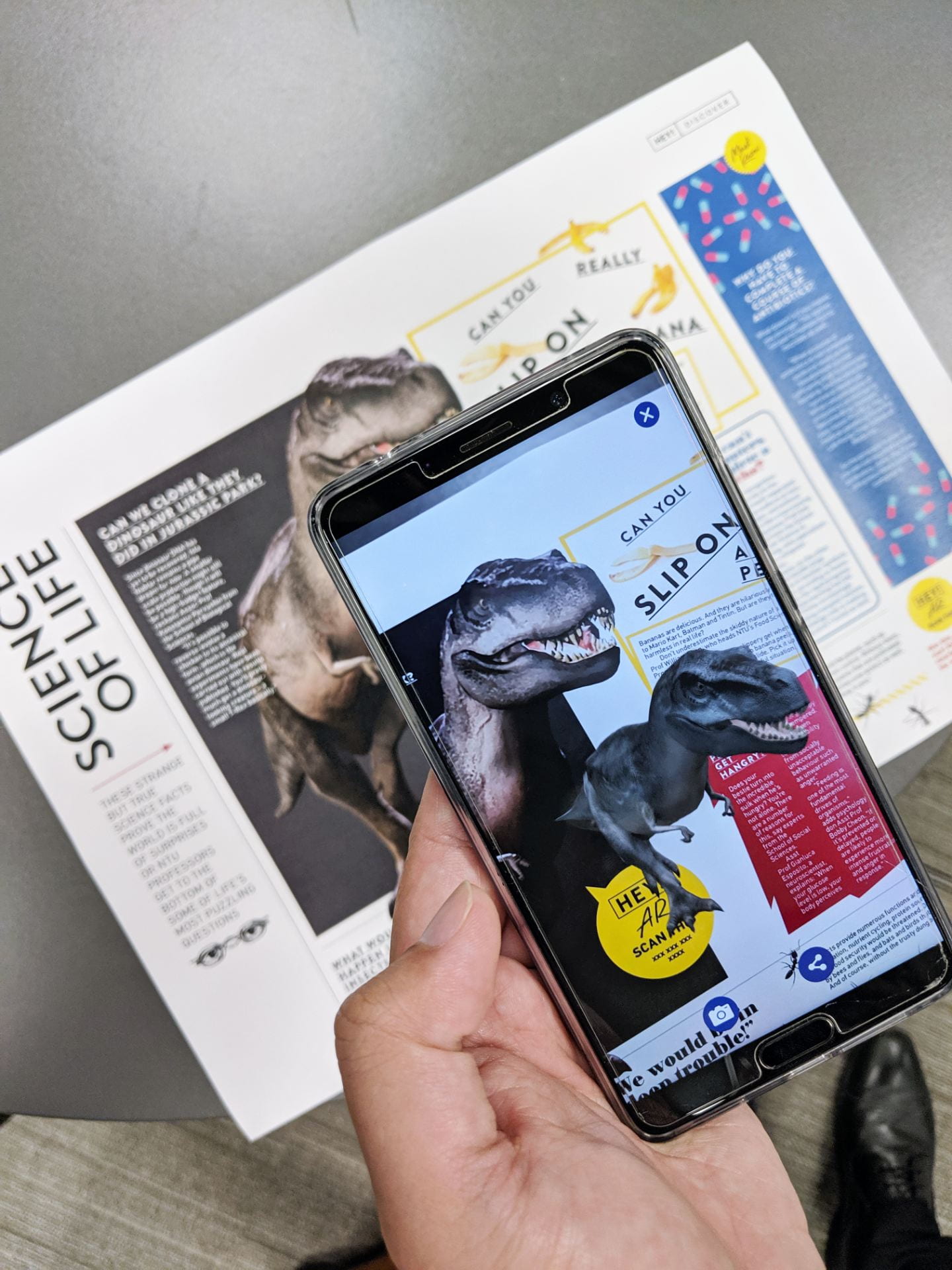Digital natives from Gen Z and experts in communication debate the future of print
by Foo Jie Ying
Eight-second attention span.
Blink, share, laugh, forget.
Pre-teens to early 20s.
Does that describe you?
If so, you belong to the new generation known as the Thumbelinas. First coined by French philosopher Michel Serres, the term refers to a subset of those in Generation Z (born between 1995 and 2010) who are constantly thumbing at their phones.
Technology is reality for the Thumbelinas, who live and breathe the digital world. And you follow what’s happening around you through the lenses of social media.
Sergul Toh, a second-year communication student, explains: “I don’t feel the need to read newspapers or magazines because I can get the news through my social media feeds which present it in an appealing manner, with lots of videos and pictures.”
Ms Jeanette Tan, an editor at local news site Mothership, echoes those perspectives: “The digital medium is largely free, convenient, immediate and highly accessible – not just in discovery but also in terms of the simplicity of the language used, in contrast to the formal tone often seen in newspapers, for instance.”
“It’s so vast and varied in range, global coverage, slants and topics, making it much easier to find varying opinions or positions on issues,” says the Wee Kim Wee School of Communication & Information alumna, who has been in the online media industry for almost a decade.
The digital medium is largely free, convenient, immediate and highly accessible.
But wait, does being a digital native make you a digital reader?
Thumbelinas may use smartphones or tablets to fill up their micro time such as whilst waiting for friends by texting, playing a game or thumbing through Instagram feeds. But will they curl up in bed to read an e-book or e-magazine on those devices?
According to the latest HEY! survey of 1,500 respondents aged 16 to 26, six in 10 find reading a physical magazine to be a form of relaxation and a break from the screen. The same number also said print was a better medium for absorbing complex information.
In addition, seven in 10 feel there are too many interruptions on digital or social media applications that distract them from what they are reading.
“I actually prefer reading physical magazines because of the tactile feel,” says second-year business student Yu Hui Xin. “It’s also a break for me as I’d rather not be constantly on my phone.”
Journalism professor Ang Peng Hwa, who has researched new media, has observed this trend more widely: “People are now more conscious about screen time like the way they are conscious of fat, salt and sugar in their food. They back off.”
Thng Kun Hong, a third-year biological sciences student, makes a point that most Thumbelinas can relate to: Print does not require data or Wi-Fi, and can be read even when your phone battery and portable chargers are flat.
The texture of the paper, the smell of the ink, and the sound of sheets turning and crinkling make print a medium that engages nearly all our senses – something the digital experience lacks, says Mr Eugene Wee, editor of The New Paper.
An NTU communication graduate with two decades of experience in the newsroom, Eugene says: “Digital has a cold feel about it. It’s the same reason why despite having digital photos, people still bother to print them out and display them.”
Digital has a cold feel about it. It’s the same reason why despite having digital photos, people still bother to print them out and display them.
A good picture displayed across the centre-spread of a newspaper or magazine makes a “very visceral impact” on the reader, he notes. “But if you view it on a device like your smartphone or tablet, it won’t have the same effect.”
Mothership’s Jeanette says that when something appears in print, it reflects an “uncompromising commitment to quality and rigour in reporting”. Behind any print product, great care is taken to ensure that everything is copy-edited and proofread, for publishers know that any mistake on paper is permanent.
Inking a new ARray of possibilities
So how can publishers take the best of print and digital forward into the future?
In 2017, the Guardian Media Group in UK, which runs The Guardian and its digital complement, began experimenting with virtual reality to transform the newspaper reading experience. It bundled a free Google Cardboard headset within the pages of its newsprint. Used together with a downloadable app, the headset helped readers to experience the news, be it visiting the scene of a murder or interactively exploring subterranean London.
To keep up with the Joneses, last year The New York Times started offering immersive experiences on a mobile app using augmented reality (AR), melding the digital and physical worlds to tell more compelling stories.
Last month, to commemorate the 50th anniversary of the first moon landing, the paper developed interactive features with AR and 3D elements that place viewers in space at exactly where Neil Armstrong and Buzz Aldrin were standing when they took their historic photographs.
These experiments with combined print and digital experiences arose after publishers that had rushed to digital-only editions found themselves floundering in terms of missed revenue projections, restructuring and the inevitable layoffs.
“While digital seems the way to go, I wish that publishers could consider striking a balance between physical and digital content, instead of completely eliminating print,” says Chia Kun Liang, a second-year communication student.
Eugene recognises this argument: “It’s not so much fatigue as it is recognition that too much time on digital devices is bad, period. Reading magazines, newspapers and books, or even doing puzzles with pen and paper – all these are just healthy alternatives to digital activities. It works the other way round too. After spending too many hours reading print newspapers, I relax by scrolling through my social media feeds.”
But regardless of medium, content is still king, he says.
“Look at radio. When TV came along, everyone said radio would die. But today, it is still around, serving listeners who prefer the companionship of a DJ while listening to music when they are driving or working. It’s the same with print. It has to reinvent itself.”
A new way of reading HEY! ARrives…

With its latest revamp, HEY! has launched its own moon shot as an augmented reality (AR) magazine, perhaps a first for a Singaporean university.
HEY! has always been a multi-platform magazine, available both digitally and in print. Annual reader surveys have consistently shown that about 80% of HEY! readers read the magazine in print. A recent HEY! survey showed that seven in 10 of the digital natives say they are likely to interact with AR through a print magazine.
HEY! is known for big, bold use of visuals, a breezy editorial style and light content targeted at its young audience.
“I feel it is very well-designed and carries great stories, the quality of which is no doubt thanks to the presence of former career journalists at the magazine,” says Mothership editor Jeanette Tan, who reads the magazine regularly and looks out for profiles she can also feature on the local news site.
With the development of ARKit by Apple and ARCore by Google, AR is going to become prevalent on all smartphones.
“AR represents a new realm in spatial communication and HEY! is a good experiment for this emerging field of communication,” says Dr Vivien Chiong, NTU’s Chief Communication Officer.
Don Tan, the creative director of HEY! who has previously worked on publications such as Her World and Home & Décor, says: “To reflect the view of the world through the eyes of the Instagram generation, the photos featured in HEY! are all taken with smartphones.”
The team tested several prototype pages with student participants during a series of focus group discussions and it attracted oohs and aahs from them. Besides the Instagrammable photos, students were thrilled at the embedded AR content since they are used to scanning things with their smartphones, such as the ubiquitous QR codes for exam welfare packs or to pay for their meals on campus.
AR imbues content with a level of engagement and interactivity – and even enchantment – that print or websites alone can’t provide.
Readers of HEY! can easily experience this for themselves from this issue. All you need to do is to download the NTU HEY! AR app, and point your device at the pages of this magazine to unravel the stories beneath.
“We are learning new things every day in this experiment that breaks new ground in terms of the magazine’s editorial concept and style. By delving into AR, we had to change the entire work flow of how we produce stories. It’s a huge challenge that we relish!” adds Dr Chiong.

This story was published in the Aug-Sep 2019 issue of HEY!. To read it and other stories from this issue in print, click here.

